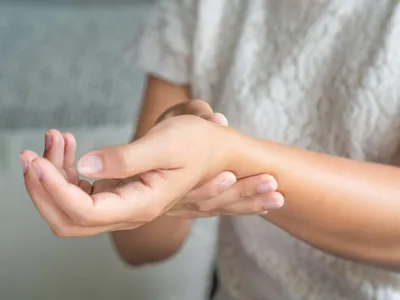RHEUMATOID ARTHRITIS REVEALED
A couple of years ago, a professional female in her late thirties walked into my office describing several months of joint pain in both of her wrists, hands, knees and feet. She reported feeling “achy and stiff”. In addition to joint pain and swelling, she also noted stiffness that lasted into the middle of her workday, loss of energy, and occasional dry eyes. She had been married for a few years and had started to think about having a baby. With the recent development in her health, she wanted to have an evaluation before thinking about family planning. The woman couldn’t believe that she was having arthritis at her age and I could see that she was very anxious about it. The difficulty with typing and writing was making her job harder and her fatigue posed a challenge. We talked about how she had to be vigilant for her office meetings and work events. She revealed feeling fearful of having rheumatoid arthritis and came for an evaluation.
RHEUMATOID ARTHRITIS IN THE PAST AND PRESENT
In the past, I would see individuals who had extensive hand deformities and immediately knew that they had rheumatoid arthritis. Patients used to fear a diagnosis for rheumatoid arthritis because they pictured a very disabling type of arthritis.
Now, newly diagnosed individuals may develop symptoms early and not have any joint deformities. The outlook for these patients has dramatically improved. Treatment advances have made it possible to stop or slow the worsening of joint damage.
My patient was so disappointed when she walked into the office that day thinking about a possible RA diagnosis. I could empathize how a diagnosis of arthritis would impact her life. In RA, the cells of the immune system may not function properly and start attacking healthy tissue in the joints and other organs by releasing chemicals. I reassured her that RA was like any other chronic medical condition like high blood pressure, diabetes or thyroid disease and may require lifelong treatment. It was important to have an early diagnosis so treatment could start immediately if there were no major contraindications.
WHAT HAPPENS WITH RA?
Rheumatoid arthritis is a chronic autoimmune disease that causes pain, stiffness, swelling and limited range of motion and function. Usually this type of arthritis is associated withinflammation. Middle aged females (fourth and sixth decades) are more commonly affected but RA can occur in any age group and in males. Small joints are commonly affected like in my former patient.
Stiffness is usually worse in the morning and can last from one hour to all day. Joint damage can happen because the chemicals that are released by the immune system can destroy the cartilage tissue that cushions the space in between the joints and bone.
RA DIAGNOSIS
Most people don’t realize that inflammation may not only be seen in the joints. Other organs such as the eyes, lungs, blood vessels, liver, heart, and skin can be affected.
A diagnosis can be made by:
– Clinical history
– Physical exam
– X-rays or other studies like ultrasound of MRI of joints
– Blood work (detection of rheumatoid factor or anti-cyclic citrullinated peptide antibodies (anti-CCP), Elevated inflammation makers like sedimentation rate (ESR) or C-reactive protein (CRP)
Once the diagnosis is confirmed, frequent checkups with a rheumatologist are crucial to strive for remission. The goal of rheumatoid arthritis therapy is to improve the individual’s symptoms, prevent or stop joint damage, and prevent complications from the disease, such as accelerated heart disease, osteoporosis and cancer (lymphoma).
THE POSITIVE SIDE OF RA
The positive side of this condition is that there are so many medications out there today that can help women and men with this disease. Before taking a medication that suppresses the immune system, a thorough discussion should take place between the doctor and individual to discuss benefits and risks of the medication.
Medication options may include:
1) Disease Modifying Antirheumatic Drugs (DMARDs)
2) Immunosuppressants or Biologic Agents
3) Nonsteroidal Anti-inflammatory Drugs (NSAIDs)
4) Steroids
In addition to medications, other lifestyle changes can be made. Implementing healthy dietary changes, cutting back on smoking and alcohol intake, and establishing good exercise and sleep habits can help with feeling better but cannot treat rheumatoid arthritis alone.
For those individuals that are interested in alternative therapies, acupuncture, yoga and massage can be options that can help with some symptom relief. These interventions alone are not adequate to treat this type of arthritis. I always encourage my patients to KEEP MOVING! A common mistake for many patients living with RA is to stop using their joints and stop exercising because of the pain and stiffness.
LIVING WELL WITH RA
A few months after the initial consultation, that young lady returned to my office with a smile. After finding the right medication combination and making certain lifestyle changes, she proclaimed that she was feeling like herself again. She had resumed some aerobic exercise and modified her diet to include more omega 3 fatty acids and less gluten. It was inspiring to see her accept the RA diagnosis and move forward in her life. She still wanted to be in remission before discussing having a baby again but I knew she was on the road to living well with RA.
References:
American College of Rheumatology ( www.rheumatology.org)

